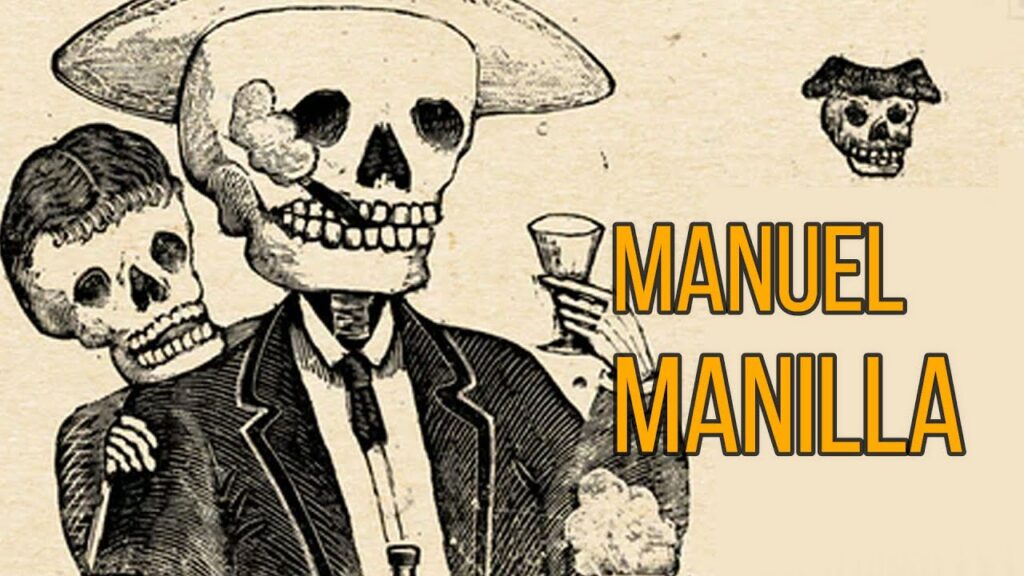Exploring the Heart of Mexican Legends: A Journey into Narrative Traditions
Mexico’s rich tapestry of culture and history is nowhere more vivid than in its treasure trove of legends and folklore. From the ancient tales handed down by the Mayans and Aztecs to the stories of mystical creatures whispered among the pueblos, these narratives form an integral part of Mexico’s national identity. Travelers seeking a deeper connection with this country’s soul will find themselves intrigued and enchanted by the oral traditions that have been the heartbeat of Mexico’s communities for generations.
The legend of La Llorona, or the Weeping Woman, is one of the most haunting tales that has permeated Mexican culture. Said to wander the rivers and streams in eternal grief for her children whom she drowned in a fit of madness, her story is a cautionary tale that speaks to deeper themes of love, loss, and redemption. Folklorists and curious visitors alike explore the various versions of this legend, each echoing the moral and social underpinnings of the regions where they are told.
El Chupacabra, a creature of legend whose name means ‘goat-sucker,’ has been a source of fear and fascination for decades. Ostensibly roaming the countryside and preying on livestock, this mythical beast represents a complex interweaving of modern myths with ancient superstitions. Adventurers can partake in storytelling sessions with locals who recount their personal experiences or share secondhand tales of encounters with the mysterious entity.
Apart from the phantasmagorical, Mexico’s legends also celebrate heroism and justice, epitomized by figures like El Zorro, the dashing outlaw who defends the common folk against oppressive tyrants. Although adapted into various films and books, the essence of El Zorro’s legend remains in the heart of Mexican narrative tradition, symbolizing the timeless fight against injustice. Explorations into his origins often lead travelers to the charming towns and landscapes that birthed such a legendary figure.
Festivals and holidays, such as Dia de Muertos (Day of the Dead), also provide an immersive experience into narrative traditions, with tales that have crossed from ancient belief into contemporary celebration. Here, the boundary between the living and the dead blurs, and ancestral stories take on new life as families gather to honor their departed loved ones with ofrendas (offerings) and colorful rituals. Each festivity is a chapter in the ongoing story of Mexico’s diverse cultural legacy, inviting adventurers to witness a living history that thrives in the joy and reverence of its people.
The Rich Tapestry of Mexico’s Oral Storytelling Heritage
Mexico’s oral storytelling is a vibrant thread woven into the cultural fabric of the country, with roots stretching back to the civilizations of the Maya, Aztec, and countless other indigenous groups. These narratives served not only as entertainment but also as a means of preserving history, spirituality, and identity. They encompass a wide spectrum of forms, from mythical creation stories, heroic epics, and fables, to personal anecdotes and modern legends. Many of these stories have been passed down through generations, with each storyteller adding their own nuances, ensuring that the tales remain as dynamic and colorful as the Mexican landscape itself.
Across the varied terrains of Mexico, from the bustling streets of Mexico City to the secluded villages in the mountains, oral storytelling remains a treasured tradition. These stories often spring to life during community gatherings, where corridos (ballads) or leyendas (legends) are shared amongst friends and family. The Day of the Dead, a festival that celebrates the lives of the departed, is one such occasion where storytelling plays a vital role, with stories that are at once poignant, humorous, and reflective providing deeper connections between the present and the ancestral past.
Furthermore, as part of Mexico’s commitment to preserving its intangible cultural heritage, initiatives and festivals dedicated to storytelling are increasingly popular. The Festival Internacional de Cuentacuentos (International Storytelling Festival), for example, has become an important annual event where oral storytellers—cuentistas—from around Mexico and beyond gather to share their stories, keeping the tradition alive and vibrant for new generations. In these spaces, the power of voice and the art of listening are celebrated, and the wisdom of the ages is transmitted through the mesmerizing art of oral storytelling.
Unveiling Mexican Folktales: Windows to a Millennium-Old Culture
Delving into the heart of Mexico’s rich heritage reveals a mosaic of vivid narratives that have been passed down through generations. These folktales offer a unique glimpse into the collective psyche of a culture steeped in mysticism, heroism, and profound moral lessons. As much a part of the Mexican identity as its famed cuisine and festive traditions, these stories serve not just as entertainment, but as educational tools that reflect the values and history of the people.
Among these tales are the legends of ancient gods and epic journeys set in a time when the world was still young. They speak of the creation myths of the Mayan and Aztec civilizations, imprinting a sense of respect for the incredible natural beauty and power that surrounds us. These stories are imbued with symbolism, intertwining humans, gods, and nature in a complex web that continues to influence Mexican art, literature, and even daily life.
Folk tales like “La Llorona,” the weeping woman who searches for her children near rivers and is said to foretell death, still send shivers down the spines of listeners and serve as cautionary guidance to respect familial bonds. “El Cucuy,” the Mexican bogeyman, teaches children the importance of obedience and the dangers that might befall the incautious. Every region of Mexico has its own set of stories, each with distinct characters and lessons tailored to the environment and history of the area.
Beyond their narrative allure, these tales often reveal wisdom about survival, justice, and social norms. Parables such as “The Rabbit and the Coyote” do more than entertain; they encapsulate the ingenuity and wit valued by Mexican culture. Even as these stories take on new forms and interpretations in modern media, their essence remains a testament to a millennium-old oral tradition that has endured colonization, revolution, and the passage of countless generations.
In contemporary Mexico, these folktales have not lost their relevance. They are retold in rural homes, at public festivals, and through various contemporary mediums, ensuring that the traditional lore is not forgotten. As we explore these captivating stories, we begin to understand how they’ve contributed to the shaping of a nation’s identity and continue to foster a sense of unity and pride among its people. The tales of Mexico exemplify the vibrant and enduring spirit of a culture that continues to enchant and enlighten with each retelling.
Discovering the Mysteries of Mexican Mythology and Folklore
Mexico’s rich culture is steeped in a tapestry of captivating myths and legends, with its folklore reflecting a blend of indigenous and Spanish influences. One of the central figures in Mexican mythology is the Aztec goddess Coyolxauhqui, whose story of betrayal and family strife embodies the celestial battles between the moon and the stars. Her narrative is just a thread in the intricate web of deities and spirits that populate the mythological landscape of Mexico, where each tale provides a deeper understanding of the natural and spiritual world.
In addition to the pantheon of gods and goddesses, Mexican folklore also whispers tales of La Llorona, the weeping woman who is said to wander by rivers and lakes in search of her lost children. This haunting tale has been told for generations, serving as both a spine-chilling ghost story and a cautionary tale about love and loss. La Llorona’s ethereal cries are ingrained in Mexican culture, often used to discourage children from wandering alone after dark, thus integrating folklore with moral education.
The figure of the Alebrijes also occupies a special place in Mexican folklore. These fantastical creatures, with their vibrant colors and whimsical mixture of animal features, were born from the fevered dream of an artist named Pedro Linares in the 1930s. They have since become emblematic of Mexican folk art, symbolizing the blurring of boundaries between reality and dreams, and the rich creativity embedded in Mexican traditions.
At the heart of Mexican folklore is also the celebration of Día de Muertos (Day of the Dead), a time when the barrier between the living and the dead is believed to dissolve. During this festive period, stories of ancient ancestors are passed down, and family members share both tears and laughter as they recount tales of those who have passed away. Mexican mythology and folklore thus serve not only to entertain but also to connect communities, preserving memory and tradition through the spoken word.
Legendary Mexico: An Adventure through Time-Honored Stories
“`html
Mexico, a land steeped in myths and legends, offers travelers a kaleidoscopic tapestry of stories that date back to the times of the Aztecs, the Maya, and beyond. The rich tapestry of history and folklore provides a unique lens through which curious souls can experience the country’s deep-rooted culture. As you journey through the vibrant cities and lush landscapes, every ruin and every festival whispers the tales of gods, heroes, and mystical creatures that once roamed this majestic land.
One cannot speak of Mexico’s legends without recounting the powerful narratives of the creation myths from Teotihuacan, the City of the Gods. The towering pyramids of the Sun and the Moon echo the cosmic battle between the forces of light and darkness – a place where the echoes of ancient civilization invite you to immerse yourself in a world where the line between the human and the divine blurs in the most imaginative ways.
Equally enthralling are the haunting tales of La Llorona, reverberating along the misty canals of Xochimilco at night. This sorrowful legend of a weeping mother searching for her lost children merges with the reality as you glide through the water on a trajinera, surrounded by the stillness of the night and the quiet murmur of the ancient waterways, making you feel as though you have stepped into a time when fables were the guides of mankind.
The intrepid traveler will also find themselves in the rugged landscapes of the Sierra Madre, where local lore speaks of buried treasures left behind by the revolutionary Pancho Villa. As the sun sets, casting golden hues on the desert, you can almost hear the clinking of spurs and the distant neighing of horses, all elements of the vivid storytelling that continues to capture the imagination of those who seek adventure in Mexico’s expansive terrains.
The Yucatán Peninsula also offers a gateway to the mysterious world of the Maya. The ruins of Chichen Itza and Tulum stand as silent sentinels to a glorious past where the Maya calendar and its prophecies were carved into stone. Stories of Kukulkan, the feathered serpent deity, intertwine with the architecture and design of these ancient cities, inviting visitors to ponder the advancements and understanding of a civilization that left behind a narrative legacy as complex and intriguing as any modern tale.
“`
Mexican Legends: Preserving the Spirit of a People Through Tales
The vibrant heart of Mexican culture is often best felt through the pulse of its stories and legends. Within every whispered tale of heroism or hushed retelling of the supernatural, Mexico’s rich history and the resilient spirit of its people are fiercely kept alive. Dating back to the times of the Aztecs and spanning through periods of colonization and revolution, these legends have served as a testament to the enduring values and unyielding strength of the nation.
Consider the legend of “La Llorona,” a tale that has been chilling the spine of listeners for centuries. It speaks of a woman doomed to wander the earth and haunt the living, crying out for her lost children. While it may serve as a scary story to keep children at bay from dangerous waters, the underlying message often reflects deeper societal expectations and fears. Over time, each retelling carries the indelible imprint of the social context it passes through, making “La Llorona” a living piece of cultural commentary as much as it is a spectral entity in Mexican folklore.
Another compelling example is the legend of “El Chupacabras,” a creature said to prey upon livestock and incite fear in rural communities. This modern myth surfaced in the 1990s and quickly captured the imagination of people across Mexico and beyond. It symbolizes the unknown fears of a rapidly changing world and the mysteries that still lie in the wilderness. These tales, whether ancient or newly birthed, remind us of the shared human experience and the need for storytelling to navigate the complexities of life and society.



